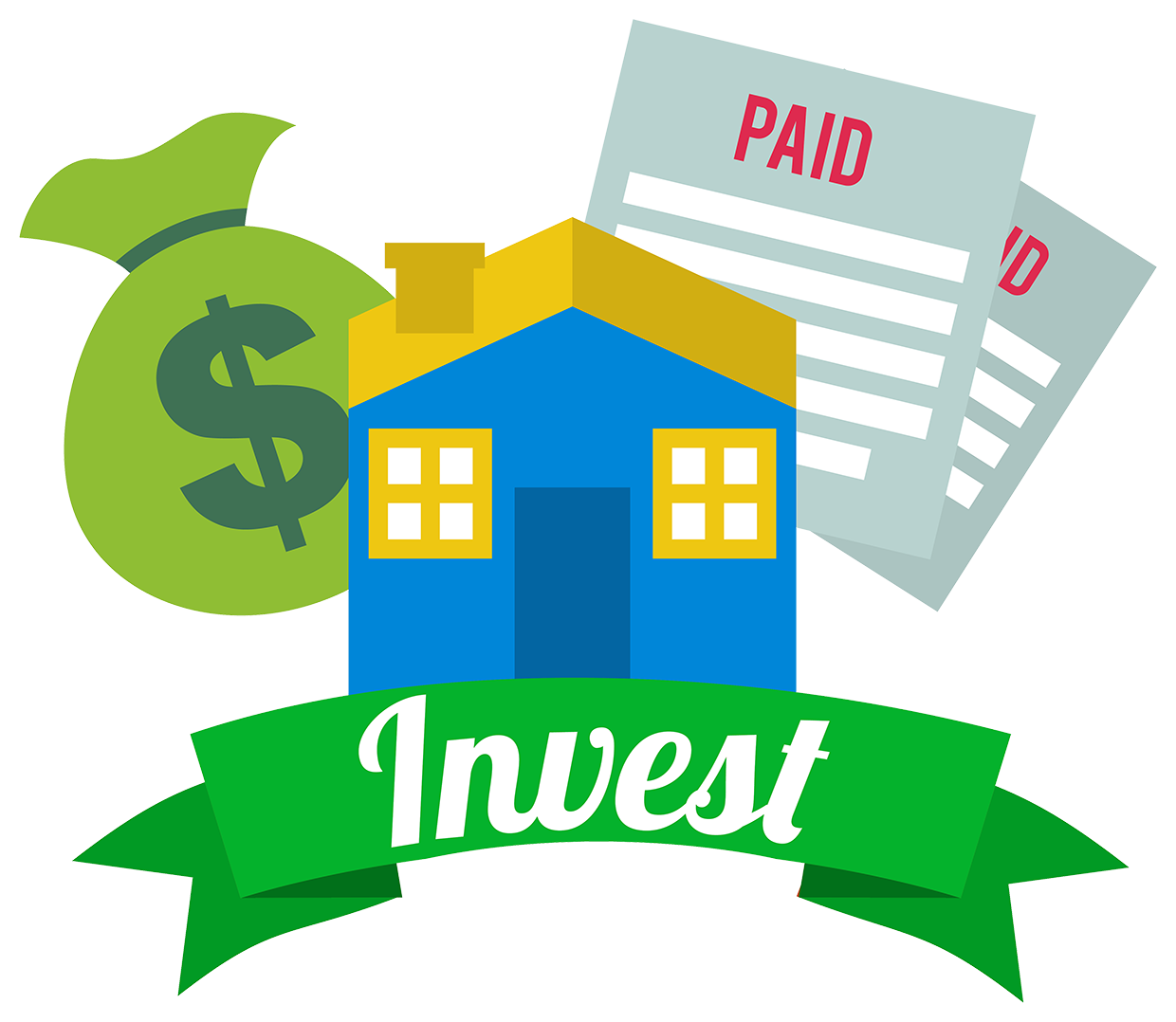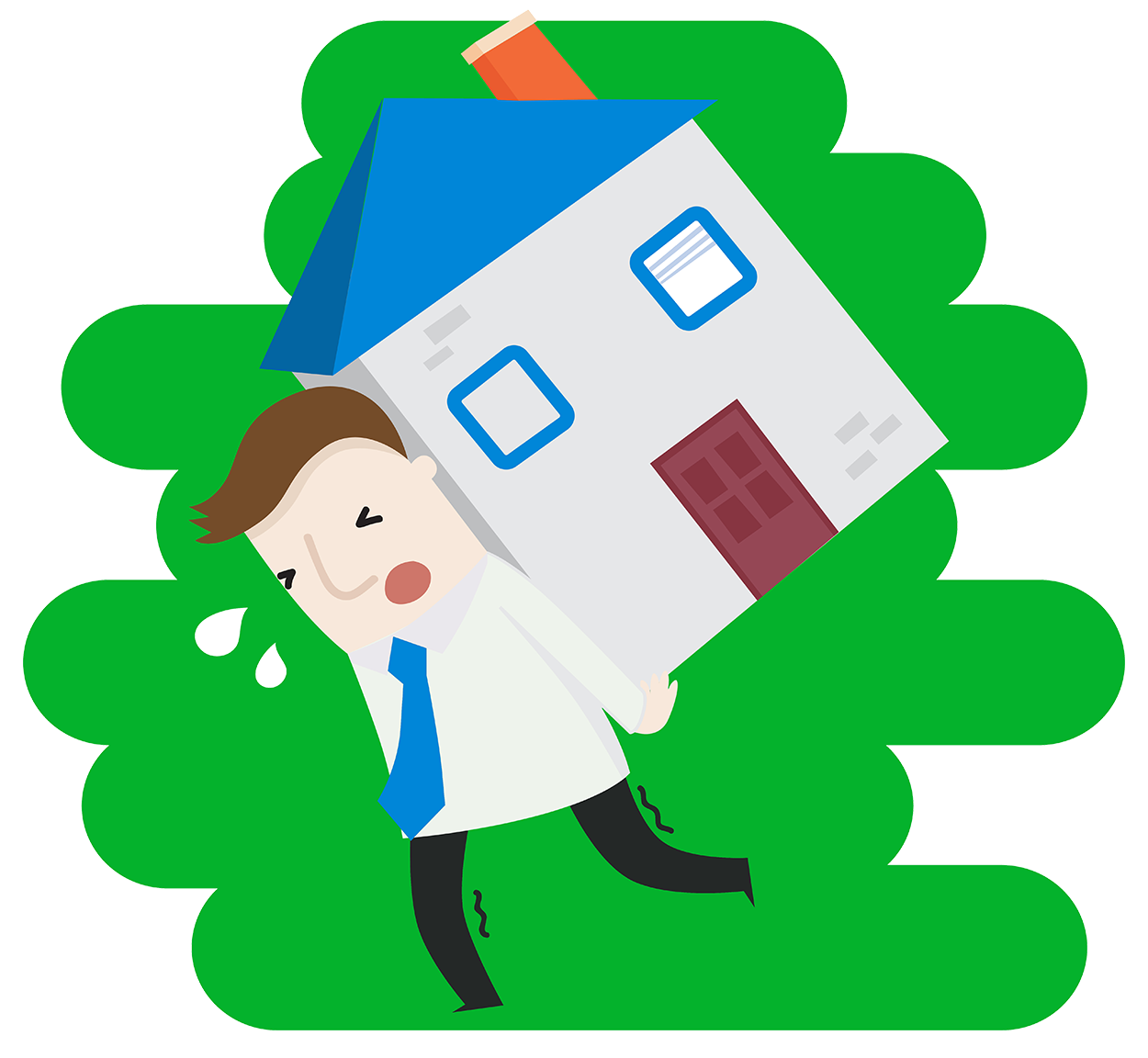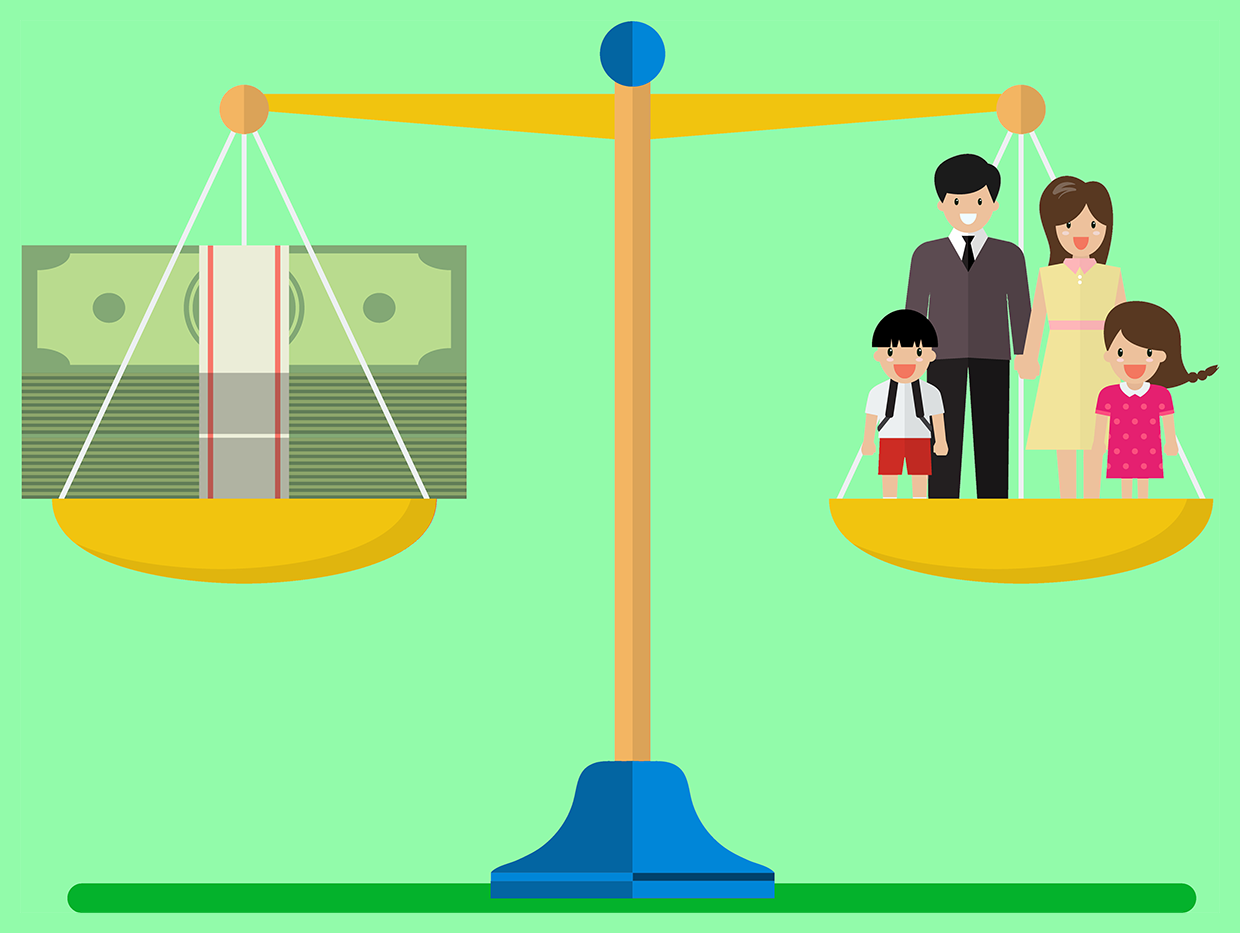Calculate Mortgage Refinancing
Are you thinking of refinancing your home? Use this calculator to discover how much you can save today.
What is Refinancing?
Refinancing is when a homeowners takes out another loan which is used to pay off their first mortgage & any secondary liens on their home. Mortgage refinancing allows homeowners to leverage the equity in their home to improve their personal finances.
How Are These Loans Typically Used?
Common use cases include:
- Lower rate: A borrower who has improved their credit profile & equity in a home may be able to lower the interest rate on the loan, particularly if the 10-year Treasury falls & drives mortgage rates down with it.
- Extend duration: Stretching the loan out over a longer period of time so cashflow can be used for other purposes.
- Shorter duration: Paying extra allows homeowners to save a bundle on interest, however many people will not do it unless it is required, thus some borrowers who originally chose a 30-year term might shift to a 20, 15 or 10-year term to force themselves to build home equity faster.
- Switch to fixed rates: homeowners who purchased with an adjustable-rate loan may choose to switch to a fixed-rate loan to lock in current rates for the duration of their loan.
- Switch loan type to remove mortgage insurance: Conventional home loans do not require private mortgage insurance (PMI) if the homeowner has at least 20% equity in the home. Most FHA loans and USDA loans typically require mortgage insurance premium payments for the duration of the loan.
- Cash out: Extracting equity which is used to pay down other higher-interest debts, or used to make improvements or additions to the home which increase its value.
- Investing: Investing in a higher yielding opportunity like funding a small business they own or publicly traded stocks in markets they own. Some homeowners who believe inflation will eventually lift financial asset prices may want to lower their monthly mortgage payments in order to be able to fund their retirement account more aggressively so gains in the retirement account can compound on a tax-deferred basis.

How Common is Refinancing?
Before the 2008/2009 financial crisis most homeowners either moved or refinanced their loans about once every 7 years. Since the recession a greater share of output has went to capital while a lower share has went to labor. In uncertain labor markets homeowners with debt are more likely to stay in place longer.
Rates have been falling on a secular basis for over 3 decades. If rates fall significantly homeowners can refinance to lock in a lower rate. That, in turn, drives down their monthly payments and interest expenses.
Refinancing a home still has closing costs, so typically rates need to fall about a half-percent to cover the closing costs and help a homeowner save money.
If interest rates rise homeowners have little financial incentive to refinance their homes unless they have an adjustable-rate loan & they think the rates will rise further. In that case they might choose to switch from an ARM to a FRM.
When the mortgage market is booming about 70% of mortgages are refinances. When interest rates are rising and loan volume stagnates then the market may flip in the other direction to where about 70% of loans are for home purchases. In June 2018 29% of mortgages were refis.
The vast majority of the US residential mortgage market uses fixed-rate loans in low-rate environments & most of those loans use a 30-year term. In June 2018 the average 30-year note rate was 4.92%, which is still quite low based on historical averages.
When interest rates jump sharply - as they did in the early 1980s - consumers typically shift preferences toward adjustable-rates. As of June 2018, 6.9% of all home loans are structured using ARMs. ARMs are relatively uncommon for VA (0.5%) & FHA (0.6%) loans, while slightly more common among conventional home loans (7.6%).
As of the end of Q1 in 2018 there is an estimated 138 million housing units across the United States & the total value of all U.S homes is $31.8 trillion. As of Q1 2018 there is about $15 trillion in outstanding mortgage debt across the United States, slightly surpassing the 2008 peak of $14.8 trillion.
The Impact of COVID-19 on The United States Mortgage & Housing Markets
2020 is likely to be a record year for overall mortgage production volume. Typically the second half of the year slows down as students are in school and parents are unlikely to want to move during cold winters or while their children are in school, but the seasonal dip in loan volume did not happen in 2020.
Federal Reserve Market Intervention
The Federal Reserve intervened in the market many ways to add liquidity. They:
- Lowered Interest Rates: The Federal Reserve Open Market Committee (FOMC) lowered the Feds Fund Rate twice in March. On March 3rd they cut interest rates 50 basis points to 1 - 1.25%. On March 16 they cut interest rates another 100 basis points to 0 - 0.25%
- Expanded Their Balance Sheet: In roughly a 4 month period the Federal Reserve expanded their balance sheet by over $3 trillion buying Treasury securities and mortgage-backed securities. Their Treasury instrument purchases lowered interest rates along the yield curve. Their purchase of MBS lowered the spread between mortgages and Treasury instruments. Consequently the 30-year fixed mortgage rate reached all time record lows of 2.92% while the 15-year fell to 2.51%.
- Issued Forward Guidance: They suggested they would not lift interest rates through 2023 and would let inflation run hot for a while until the unemployment rate fell significantly.
Stimulus & Payment Relief
In addition to the above, the CARES act allowed homeowners to request forbearance on their mortgage payments for up to 360 days while also prohibiting eviction for non-payment of rent. The United States federal government also passed trillions of dollars in stimulus bills to offset record economic contraction in the second quarter. After winning the 2020 presidential election Joe Biden announced he would pick Janet Yellen as his head for the United States Treasury. As she was a former head of the Federal Reserve that pick was cheered by the market on the presumption she would aid both organizations working together closely and better aid international policy coordination.
2020 Mortgage Statistics
First 3 Quarters
The Mortgage Bankers Association provided the following mortgage volume estimates as of November 2020. All volume figures in billions.
Q3
Attom Data Solutions published the following mortgage stats for the third quarter of 2020.
Yearly Totals
At the end of 2019 there was $16.01 trillion in residential mortgage debt outstanding across the United States. 2020 is likely to be a record year for total mortgage originations with Fannie Mae suggesting there would be $4.1 trillion in total loan first mortgage volume. The biggest contributor to the growth is the refinance market, which they estimated to reach $2.7 trillion.
- Falling interest rates boosted the refinance market.
- The purchase market was also boosted by the combination of low rates, a work-from-home movement and lockdowns which made some wealthy people who lived in cities consider renting or buying larger homes in more remote locations, and lockdowns plus social unrest which made urban real estate less appealing.
- About the only segment of the market which is off significantly is second mortgages, as people who may have been interested in taking one in the past instead decided to refinance their mortgage to take advantage of falling interest rates.
United States Home Ownership Statistics
According to the 2012-2016 American Community Survey 5-Year Estimate the housing stock is broken down as follows

Among the owner-occupied properties with mortgage debt, the breakdown is as follows
Should I Refinance My Mortgage?
Is it Harder to Buy a Home or Refi?
Typically refinancing is easier than purchasing a home as the lender has higher profit margins due in part to fewer parties engaged in the transaction & relying on some of the work done on the original mortgage.
Should I Refi or Get an Equity Loan?
Home equity loans & home equity lines of credit (HELOC) are both treated similarly to a mortgage in that they are liens on the property. However, there are some substantial differences between the three options.
Refi
Refinancing makes sense if you are certain you will live in the home for years to come and you want to withdraw a significant amount of equity or are pushing to significantly lower the interest rate on your existing loan. Refinancing is similar to a purchase mortgage in terms of having a significant upfront cost in terms of both time and money.
Home Equity Loans
Home equity loans are far easier to obtain than a full on refinance & they have a far lower upfront expense as only a portion of the home's equity is being converted to cash.
Typically banks will allow homeowners to withdraw somewhere between 70% to 95% of their home's total value, depending on their credit score and other factors. The ratio of debt to home price is called loan to value (LTV).
If a home is worth $250,000 and it had a first mortgage with $150,000 of debt on it that would leave $100,000 in remaining equity. At 70% of the home's value a homeowner could cash out an additional $25,000 on top of the $150,000 they owe on their first mortgage. At 95% a homeowner could cash out up to $87,500.
Home equity loans are typically structured as a fixed upfront loan amount which then charges a fixed-rate of interest & fixed payments that amortizes over a fixed-term like 5 or 10 years.
Home Equity Lines of Credit
Home equity lines of credit act similarly to a credit card. A homeowner is authorized to borrow up to a cap or limit over some period of time like 5 years. Each time the money is repaid the cap still remains & can be used again.
Homeowners are not charged any interest until they draw on the line & then they are charged a variable rate which changes as the broader market changes.
This option gives homeowners maximum flexibility without the upfront costs associated with a refinance & without the need to pay interest until they draw on the line.
Hybrid Equity Loans
Some banks offer hybrid equity products where a portion of the balance is treated as a home equity loan & there is an additional cap which can be used to withdraw further equity on a credit line.
Do Refinanced Loans Charge Closing Costs?
All mortgages come with loan origination & closing costs. If a loan is marketed as having "no closing costs" then the associated costs are typically rolled into the interest rate charged on the loan. For instance, a person might get a 4.5% 30-year mortgage with $3,000 in closing costs, or a "no cost" home loan with the interest rate set at 4.75%.
Typical fees are highlighted in the following table.
On average you can expect fees to run around $2,500 to $3,800 based on the value of the home & which loan options you chose.
Understanding Your Break Even Point
Lowering the interest rate on a home can save a homeowner money over the long run, but it can take years to offset the initial closing costs on the loan. The following table can help homeowners work through if refinancing is right for them.
The above example presumes the following:
- homeowner itemizes deductions: If the homeowner does not itemize deductions from income taxes then the steps associated with income taxes can be omitted. If the homeowner is taking on additional debt which is not used to improve or expand the dwelling then interest associated with it may not be tax deductible. The Tax Cuts and Jobs Act of 2017 lowered the mortgage interest deduction limit to the interest on $750,000 in mortgage debt for new loans, through refinance loans which replace a loan that was already originated before the law change still qualify for the old $1,000,000 limit.
- matching loan amounts: It presumes the homeowner does not withdraw equity from their dwelling when they refi & is borrowing the same loan amount. If the homeowner cashes out a large sum of equity then the new loan may not ever break even in a strict financial sense, but if they have other uses for that money that are more important or provide a higher return than the additional interest expenses then it can still be worth refinancing.
- matching loan durations: It presumes a loan with 20 years left remaining on it will be refinanced over a 20-year term. If the loan terms do not match then one also has to take into account the remaining loan balance along with the monthly interest savings. This is why our calculator shows how much total interest the homeowner will pay across the entire term of the new loan & the remainder of the old loan.
- no prepayment penalty: If the current loan has a prepayment penalty then that will also need to be factored into the above equation with any prepayment penalty being added to the loan fees & closing costs to get the total expense.
Cash Out Refinancing Limits
Banks typically limit borrowers to a maximum loan-to-value of around 80% to 85%. Most who try to borrow above this level are typically denied & if they are approved they are required to pay higher rates of interest to compensate the lender for the elevated risk.
Homeowners who financed their homes through a government sponsored loan program have the following limits:
- FHA: 80% LTV
- USDA: 80% LTV
- VA: 90% LTV
Other Considerations

Beyond a loan's break even point, homeowners should also consider their situation when debating if a refinance makes sense.
- If the homeowner plans to move in the next couple years then refinancing may not make sense.
- Is the family like to expand or downsize in the next few years? Will such a shift change the homeowner's home needs?
- If the loan is almost paid off then recasting the loan out for decades to come may not make sense.
- If the refi pays for much needed home improvements then it may make sense, but if it is using the house like a piggy bank to fund unneeded consumption then it might not make sense. Taking out a new loan to pay off other higher interest loans is only practical if additional debt won't be re-created by once again maxing out credit cards.
- If the homeowner is young and is highly confident in a business which needs capital to grow they might be willing to take a big risk by leveraging their house for funding, but if the homeowner is older & does not know how many more years they have left to work with a stable income then other alternatives might make more sense. For instance, a reverse mortgage might make more sense than refinancing for retired senior citizens.
Mortgage Market Statistics
A software company named Ellie Mae powers the loan application process for many lenders. Here are their average side-by-side average credit score, loan-to-value & debt to income ratio statistics for closed purchases and refinances from the June 2018 version of the Origination Insights Report.
Total Market
Conventional Mortgages
FHA Loans
VA Loans
About Our Site
Our website uses Clicky analytics service to measure web traffic. We do not carry any advertisements, directly collect any personally identifiable information, nor share data with any other third parties beyond our web analytics measurement service. User data is further protected by using a secured connection. Do you have questions about our site or feedback to improve it? Please email us at
© 2019 — 2024 RefinanceCalculator.org — All Rights Reserved
